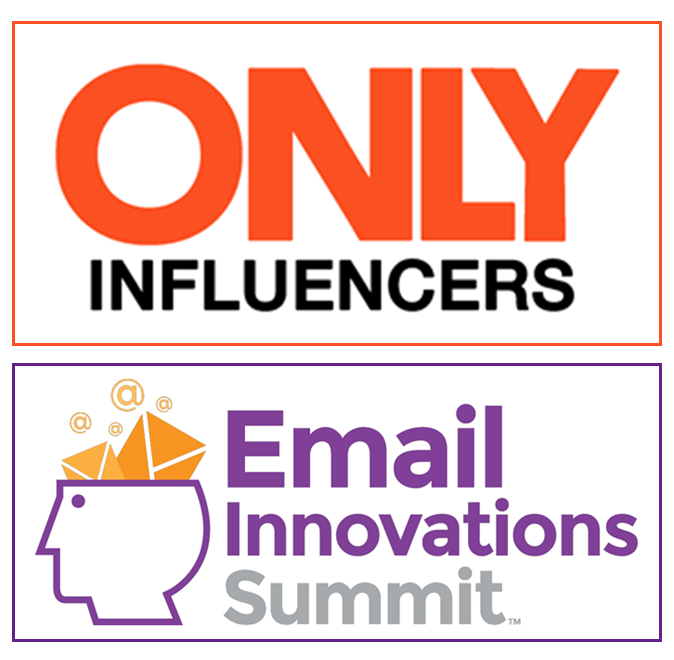My background, social media vs. email, A/B split testing, wireframe layouts, optimization tips…. and more. Late last year a vendor interviewed me about a wide range of email marketing topics. It was unfortunately never published… until now. Here’s part 1; watch for part 2 next week. Enjoy!
To begin with, please tell us a bit about yourself. You’ve spent 20+ years in the email marketing industry. Tell us how you became interested in this field and how your journey has been so far.
I began working in online/digital marketing right out of graduate school. The internet was just becoming a thing with consumers. I felt like it was the future, and thank goodness, I seem to have been right.
I kind of fell into email. A former boss of mine reached out to hire me again — has was building a digital marketing team for a large B2B publisher. He had an immediate opportunity for a head of email marketing. He said he knew I could do it (email had been one of my areas of responsibility when I had worked for him previously) and promised to move me elsewhere if I was unhappy after 6 months.
Not only was I not unhappy — I loved it! And I’ve been focused on email marketing ever since.
I started my own boutique consultancy, Email Optimization Shop, in 2001. I took the helm of Only Influencers, the original community of email industry professionals, in 2019. In 2020, I programmed and moderated my first Email Innovations World, an annual conference for email industry professionals (our next event is June 5-7, 2024, in Phoenix, AZ).
Learn more about me, Email Optimization Shop, and the work we do at www.emailopshop.com.
Learn more about the Only Influencers community of email industry professionals at www.onlyinfluencers.com.
Learn more about the Email Innovations World conference at www.emailinnovationsworld.com.
With the rising popularity of social media, many companies have cut the budget for their email marketing efforts. How would you convince businesses to invest in email marketing, as it is still the channel that brings the most ROI?
Email marketing is kind of the grandparent of digital marketing — it’s not as sexy as social media and the newer channels, but it’s usually much more profitable.
But here’s the thing: It’s not difficult to make a profit on email marketing, since the costs are so low (assuming you have your own list). But in a way affordability is a double-edged sword. Many companies have profitable email marketing campaigns, so they put incremental investment into trying to make unprofitable channels profitable. I show my clients that they can significantly boost their revenue from email marketing with just a little more investment in strategy and optimization.
I’m not anti-social media — in fact, my work for clients often bleeds over into other digital marketing channels, including social. But in most cases an effective email marketing program will outperform the other channels — and so it’s not me convincing businesses to invest in email, it’s the data.
Forrester Research even said that if you have to choose between getting a new follower on social media or a new email subscriber, go for the email subscriber every time! Read more about this here: https://emailopshop.com/social-vs-email-choose-email-according-forrester-research/
You’ve A/B tested the performance of multiple email layouts. Which one performed the best and why?
There’s no one perfect layout for all emails sent from all companies — that’s not the point of testing. With testing we’re looking for how best to motivate a specific organization’s prospects and/or clients to action using communications set via email.
We structure our testing to get results we can leverage broadly over future sends, in order to maximize the benefit. I write a lot of case studies, with results, about the tests I do for clients. But I always say that you should never take the results of one of my case studies, or anyone else’s case studies, for that matter, without testing them yourself.
That means recreating the tests I’ve done with your audience, your content, your calls-to-action, etc. Because you need to find out what works in your ecosystem; it may be different from what works in my clients’ ecosystems.
Here’s a case study on one wireframe test I did with a client: https://emailopshop.com/test-your-above-the-fold-wireframe-to-improve-revenue-a-case-study/
Building on the previous question, how do you manage to address the unique nature of each email while maintaining the same layout?
Wireframe layouts are just one type of test that I do with my clients – and we often end up with a stable of layouts, not just one. We’ll choose from this group when developing a new email message. We also test things like landing pages, calls-to-action, copy, approach, preheader text, subject lines, and more.
It’s important to develop a strategic testing plan; this helps you focus your testing efforts. I like to start by looking at previous sends, both the quantitative metrics and the creative.
With metrics it’s the business metrics, related to revenue or some type of conversion, which are your key performance indicators; these measure how well your campaign performed.
Your diagnostic metrics (opens, clicks, etc.) tell us how people engaged with your email — and give you hints as to which levers you need to move to improve your KPI.
Once I have a feel for the strengths and weaknesses of past campaigns, I can develop a test plan going forward to boost performance.
The plan is different for every client, because each client has different strengths and weaknesses.
Here is a blog post about the 15 types of email marketing tests you should be doing: https://emailopshop.com/tbt-15-types-of-email-marketing-tests-you-should-be-doing/
What are your top 3 tips for optimizing email for greater conversion?
1. Put together a formal performance testing plan. Base it on your own program’s strengths and weaknesses — and plan your tests at least three months ahead of time.
2. Don’t just test subject lines. I like to start testing closest to the conversion, at the bottom of the conversion funnel. This has a couple benefits.
One, a 5% increase at the bottom of the funnel (in actual conversions) is going to deliver results sooner than a 5% increase at the top of the funnel (like in open rates).
Second, as you move up the funnel every optimization you make here will also get the benefit of optimizations further down the funnel. So you’re getting exponential benefits with each new optimization you make.
3. Always use a business metric, not a diagnostic metric, as your KPI.
Business metrics involve conversions and/or revenue. Diagnostic metrics are things that involve opens and clicks. It doesn’t matter what you’re testing — you should always look to your final goal to determine a winner – which will be measured by your business metrics.
I’ve published articles about how opens and clicks aren’t good proxies for conversions and revenue. Just because a subject line gets people to open the email doesn’t mean it will motivate them to click and convert. This is really just the beginning.
You’ll find a treasure trove of ideas to improve your email marketing on my blog: www.emailopshop.com
Thanks for reading! Watch for part 2 next week which will cover message maps, AI, holiday campaigns, KPIs (again), and 2024 email marketing trends.

Photo by Michal Czyz on Unsplash






